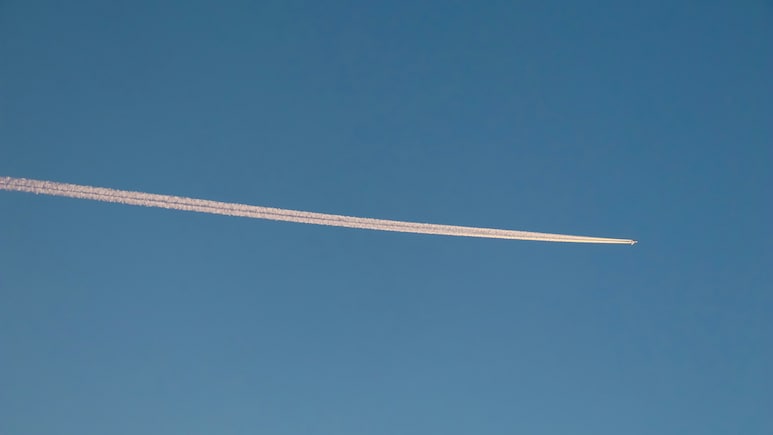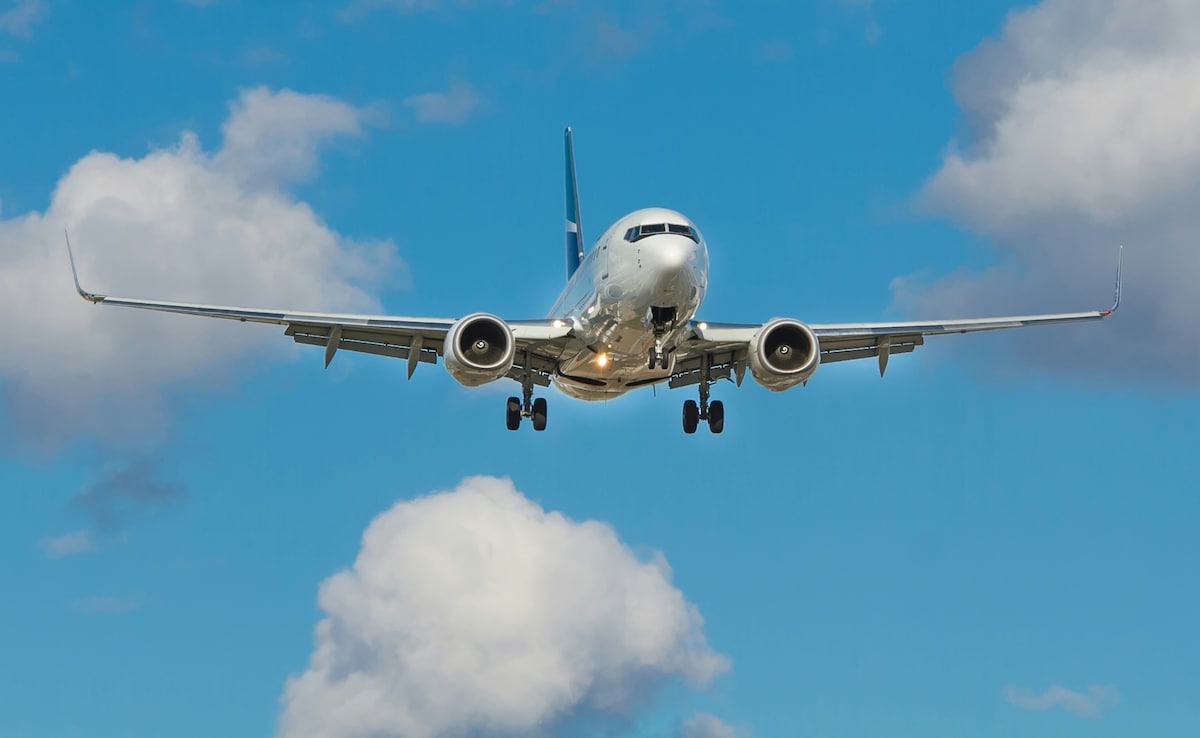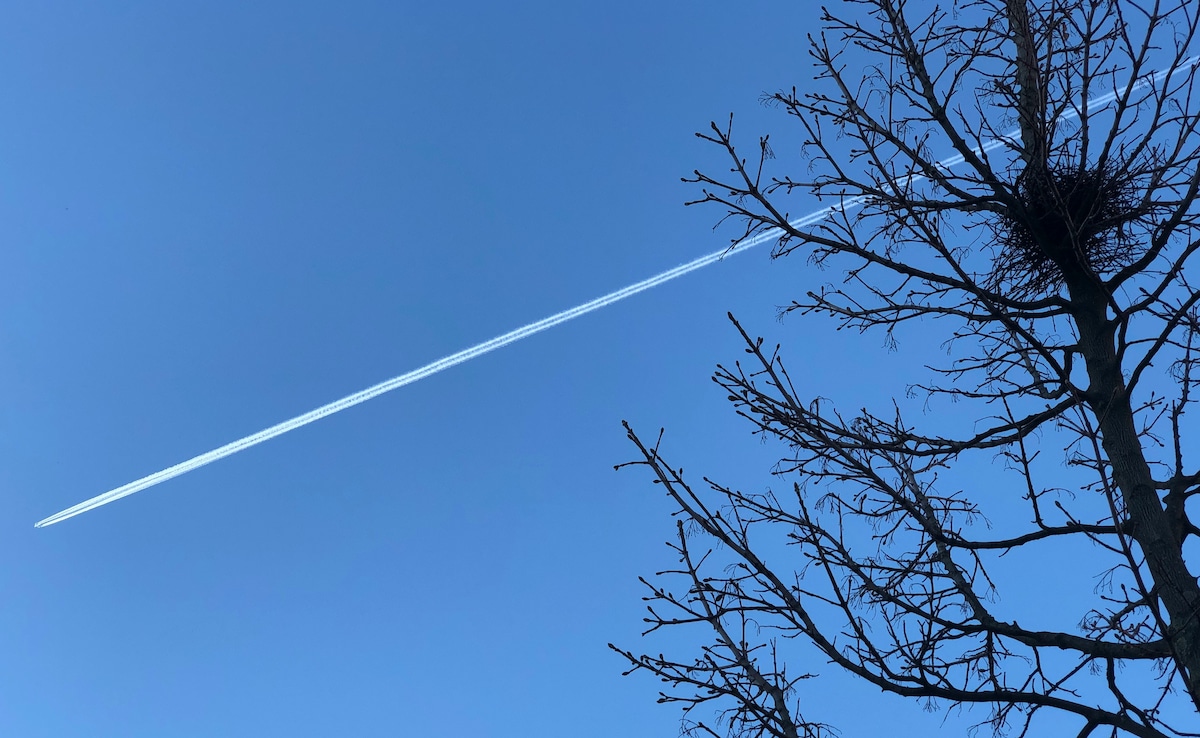
- Contrails form when hot engine exhaust meets cold air at high altitudes
- High humidity at cruising altitude allows contrails to persist and spread out
- Low air pressure at altitude causes rapid cooling, aiding contrail formation
Have you ever looked up on a clear day and noticed long, white streaks stretching across the sky? These lines, often crisscrossing in fascinating patterns, are more than just airplane trails and offer a glimpse into the science of flight and our atmosphere. Sometimes they disappear almost instantly, while other times they linger, forming clouds that seem to float forever. Many people wonder why airplanes leave these streaks (contrails) and what they are made of. The answer lies in a combination of engine exhaust, air temperature, humidity and other atmospheric conditions. Are you curious about the real reason behind these white streaks in the sky? Keep reading to find out!
Also Read: Ever Wondered Why Airplanes Are Always White? Here Are 5 Reasons
What Are Contrails?
The white streaks left by airplanes are called contrails, short for condensation trails. They are made up of tiny ice crystals or water droplets and can appear as short-lived lines that fade quickly or as persistent streaks that spread out and resemble thin clouds. Their shape, size and how long they last vary depending on the atmosphere.

Photo Credit: Unsplash
Why Do Airplanes Leave Contrails? Here Are 6 Key Reasons
1. Hot Engine Exhaust Meets Cold Air
Airplanes burn fuel, producing exhaust gases that are hot and rich in water vapour. When this exhaust meets the chilly air at high altitudes, the sudden temperature drop causes the water vapour to condense into tiny droplets or ice crystals. These ice crystals are what we see as the white streaks in the sky. The higher the plane flies, the colder the air, which makes contrail formation more likely.
2. High Humidity At Cruising Altitude
Contrails are more likely to form when the upper atmosphere is humid. If the air is dry, the water droplets from the exhaust evaporate quickly, leaving only a faint trace or none at all. But in humid conditions, the tiny ice crystals persist, and the contrail can remain visible for several minutes to hours, sometimes spreading out to form cloud-like formations.
3. Air Pressure Changes
At high altitudes, the air pressure is much lower than at ground level. When hot exhaust gases expand rapidly in low-pressure air, the temperature drops even further. This sudden cooling can trigger the condensation of water vapour, contributing to contrail formation. The combination of low pressure and cold temperature creates perfect conditions for those iconic white streaks.
4. Engine Type And Fuel Burned
Different aircraft engines and fuels produce varying amounts of water vapour and tiny particles, called aerosols, in their exhaust. Jet engines, for example, are particularly efficient at creating contrails because they release both high-temperature water vapour and fine particles that act as nuclei for ice crystal formation. Some newer, more fuel-efficient engines produce thinner or shorter-lived contrails.
5. Atmospheric Winds
Once formed, contrails don't stay static. Winds at high altitudes can stretch, twist, and disperse them, sometimes turning a single streak into a long cloud. Calm winds allow contrails to linger longer in a straight line, while turbulent conditions can make them break apart quickly, creating a patchy or streaked appearance.
6. Flight Altitude
Planes flying higher in the atmosphere are more likely to leave visible contrails because temperatures at cruising altitude are far below freezing. Lower-flying aircraft often do not produce contrails because the air is warmer and can hold the moisture from exhaust without condensation. Essentially, altitude determines whether the white streak appears at all.

Photo Credit: Unsplash
Interesting Aeroplane Facts You May Not Know:
Why Are Airplane Windows Round, Not Square?
Airplane windows are round to better handle the pressure changes at high altitudes. Square windows can develop stress points at the corners, which may lead to cracks, whereas round windows distribute the stress evenly, making them safer.
Why Are Airplanes Painted White?
Airplanes are mostly painted white because it reflects sunlight, keeping the plane cooler and reducing heat damage to its exterior. White paint is also lighter, which improves fuel efficiency and it shows cracks or leaks more clearly for maintenance purposes.
Also Read: 5 Fascinating Reasons Why Airplane Windows Are Round, Not Square
Why Are Cabin Lights Dimmed Before Landing?
Cabin lights are dimmed before landing to help passengers' eyes adjust to the outside light. This improves visibility in case of an emergency evacuation and allows crew to better monitor the cabin.
Next time you look up and spot those white streaks across the sky, you'll know there's more to them than meets the eye.
Track Latest News Live on NDTV.com and get news updates from India and around the world

